No Results Found
The page you requested could not be found. Try refining your search, or use the navigation above to locate the post.

Staying ahead of the competition is a must. Here’s six things you need to be doing as a sales manager in 2018:
Gut-feel and experience are essential guiders of decisions in sales teams, but these shouldn’t be used alone. Accessing relevant data to get feedback and forecast is now standard in today’s technology age. Modern sales apps allow pro-active tracking of customers and competitors. This reduces guesswork and enables metrics to be developed that are useful predictors of buying behaviour. Accessing real-time feedback also revolutionises sales meetings. Instead of spending time getting status updates, more time can be spent on coaching and training. Easy-to-see overviews tailored to your requirements make forecasting a pleasure. With a full sales solution, sales processes can also be standardised and streamlined. This leads to greater efficiencies and quicker onboarding of new sales reps.
Syntel Case Study
Syntel is a US $825m IT and outsourcing company. Recently, they were growing rapidly and needed a system to revamp their sales processes. They needed something that could manage leads and opportunities right through to closure. The ability to integrate marketing campaigns was important to drive impact and growth. By deploying a Microsoft Sales and Marketing solution, they were able to see their sales pipeline at multiple levels in real-time. Global account teams were able to see the progress of their colleagues in different territories. This spurred teams on to better performance. Revenue forecasting became much more reliable and sales processes were tracked and improved upon. This allowed growth to continue. Management of sales teams became so much easier. You can read the full case study here.
When a sales rep moves on, valuable customer information may go with them. This is always a risk if reps keep their own prospect and customer data in spreadsheets. The solution is to bring it all into the cloud in one system. That way everyone on the team can see the data and add to it, giving a richer understanding of the customer. Your customer and prospect data is a key asset for your sales team. Centralising this allows the information to grow and mature.
Trek Case Study
Trek sells bikes through a network of independently owned retailers. They rely on a close, supportive relationship between the local sales reps and the store owner. In the past, when a rep left or retired it would take years to rebuild the rapport and customer knowledge. By installing a Microsoft Sales solution, Trek were able to see account histories, financial data and inventory all in one place. New reps had all the info they needed to connect meaningfully with store owners. Event reports and weekly updates were sent out using the sales solution. This ensured sales reps had detailed records on customers, making the customers feel known and cared for. You can read the full case study here
Reps spend 75% of their time on non-selling activities. But with modern sales apps, this can be dramatically reduced. Empower your sales reps to have all the customer info they need on their phones. Allow them to update deal info as soon as the meeting is over and so give you accurate forecasting information. There are a number of comprehensive systems on the market. At The CRM Team, we use the Microsoft Dynamics 365 for Sales (compatible with iOS, Android and Windows). It has seamless integration with Office 365.You can track all your customers and prospects without ever leaving Outlook.
CSX Transportation Case Study
CSX Transportation has 32,000 employees. Previously, customer information was spread over multiple systems. There was no way of seeing customer touch points across different business groups. Frustratingly, sales information wasn’t held centrally. By bringing all this information into one system, sales teams were able to save on their admin time. Consequently, they spend more time building customer relationships. It was only a matter of time before revenue increased. Read the full case study here
Nowadays, the best sales teams collaborate regularly on accounts. Learnings are shared across teams, and cross-selling opportunities are identified more easily. This is the case whether you run an inbound sales team or have reps on the road. With greater collaboration, teams can respond quicker to new sales opportunities.
Nat West Bank Case Study

Recently, UK Bank Nat West installed a Microsoft CRM solution, going live to 3000 users. Now, when a customer contacts the bank, sales staff have all the relevant information at their fingertips. It doesn’t matter which team the customer made their initial contact with. This smart pooling of customer data has led to increased cross-selling. The increased revenue from this alone will provide a return on investment by 2018. Read the full case study here.
In a world of smart phones, it’s only natural that sales and customer data should be accessible via mobile devices. This sort of access not only increases productivity but also keeps sales teams connected and aware of what each other is doing. Mobile sales solutions allow for flexibility and responsiveness to customer needs. A good system will be able to work whether there is web access or not. It should also provide a cloud backup so that data is never at risk.
Grant Thornton Case Study
Grant Thornton LLP is one of the world’s largest professional services providers. Recently, they installed a new CRM solution with mobile sales capacity. Rick Stow, their Head of Client Relationship Management, said: “One of the most appealing aspects… is the ability to deliver the same experience across multiple platforms. Whether you’re opening a form from within Outlook, from a browser, or on a mobile device, you have full functionality.” Stow says this has resulted in their workforce being more connected and more productive. Ultimately, enabling them to service their clients better. Since upgrading to a CRM system with a mobile sales capability Grant Thornton LLP has experienced:
– a 450% jump in the number of sales opportunities,
– a 36% increase in average win value, and –
– a 700% rise in the number of contacts in the system.
Read the full case study here.
Not knowing when prospects interact with you is a hinderance to your sales process. By adopting a combined marketing and sales solution you can get quick insight when prospects browse your website, read an article or download a white paper. It also helps marketing and sales team align better, ensuring that marketing hands over only quality leads.
Crowe Horwath Case Study
Crowe Horwath LLP is a performance consulting firm. They decided to bring all sales records and customer information under one sales solution. Dave Keever, Principal at Crowe explains the impact:
“We now have full visibility of our marketing efforts around a contact or account. We can see, for example, if a customer or prospect opts in on an email or has downloaded any of our white papers, and we can then discuss that with them in a meeting. Before, it could take a day or two to find out about an account and the surrounding marketing activities. Now, it takes seconds.” Keever says that the adoption has been very cost effective: “Both the greater visibility into our sales pipeline and the increase in the number of users are contributing to our return on investment. We expect the payback period to be between nine and 15 months.”
Read the full case study here.
The page you requested could not be found. Try refining your search, or use the navigation above to locate the post.
Discover More Stories

Now those sleepless nights have arrived!
On Monday, Microsoft and LinkedIn threw out their first challenge to Salesforce.com. In an article released by Reuters, Microsoft CEO, Satya Nadella shared the companies plan to integrate LinkedIn data with their Dynamics 365 offering.
According to Microsoft, the upgrade will help salespeople become more efficient. With new insights from LinkedIn’s 500 million professionals, this solution will help salespeople improve their pipeline by,
The new solution will comb through a salesperson’s emails, CRM, and LinkedIn to gain insight into their relationship with a potential customer. And ultimately give recommendations on the next best action to take.
“We’re introducing a single offer that brings together LinkedIn Sales Navigator and Dynamics 365 for Sales… at about half the cost of competitive solutions.” Said Microsoft on Monday.
“I want to be able to democratise A.I. so that any customer using these products is able to take their own data and load it into A.I.”
“This is really all about expanding the opportunity we have, going beyond productivity and collaboration tools, to having a professional network.”
We all know LinkedIn is the business social hub and is a fantastic source of data for salespeople. So, we’re excited to see the first updates to Dynamics 365 that will include LinkedIn.
Read the full article here: Microsoft’s Nadella banks on LinkedIn data to challenge Salesforce
The page you requested could not be found. Try refining your search, or use the navigation above to locate the post.
Discover More Stories

You’re about to report your numbers to the board. And you know you’ve missed your sales target.
You’ve either over committed and under delivered. Or under committed and over delivered. Either way, the consequences are dire – you’ll lose your customers.
Imagine this…
You weren’t able to close that final deal in time. Now you’ve missed your target by R1 000 000. The company was therefore, unable to procure enough stock to meet orders. One of your customers was left waiting longer for delivery than agreed. As a result, that customer cancelled further deals with you.
Or this…
You brought a deal forward. And the business wasn’t able to make provision for the stock required to actually deliver on the deal. This ended up with a delay in delivery to the customer. As a result, the customer was unhappy and swore to never use your company again.
Now you’re thinking, “How did this happen?”
A survey done by Talk Business showed that 70% of Salespeople regularly miss targets.
That’s a scary number, and one that’s probably making you question the effectiveness of your Sales team. But have you really dug into the root of the problem? Let’s look at where things might be going wrong.
The first hurdle to making your target is getting leads. Right? Wrong! The first hurdle to making your target is getting the RIGHT leads. And those leads come from Marketing.
Does this sound familiar?
Sales:
‘I need local leads! But all these leads are from an internet cafe in Bangalore!’
Marketing:
‘But you never said that when you briefed us! You just said you needed 150 leads by Friday. And we delivered!’
Salespeople are optimistic by nature. Some will walk in after the first meeting with a new client bragging, “that deal is going to close. It’s going to close tomorrow. And it’s going to be huge!” But it never happens like that. Companies don’t spend millions of Rands at the drop of a hat. There are steps that must take place before a customer will spend money with you.
That’s why your sales process is vital to the success of your Sales team. If each sales opportunity is handled differently, the results are hit or miss. And if you’re not making your targets, we’re guessing it’s a miss.
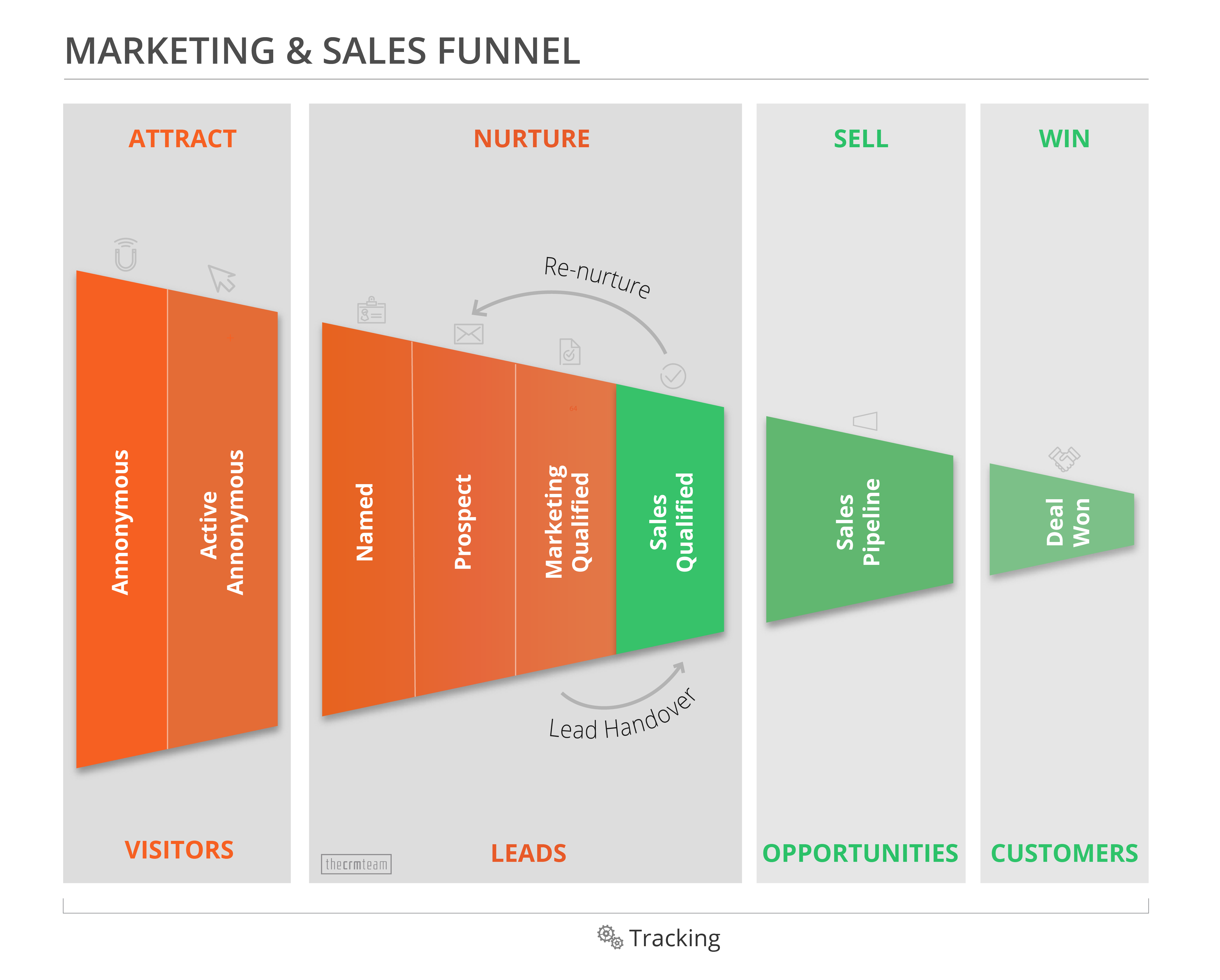
Salespeople are naturally intuitive. That’s what makes them good at their jobs. But it also means they can get away with a lot. It’s not hard for them to buck the system. To move deals in the pipeline, or shift them out. They’ll do whatever it takes to get out of a difficult conversation.
Actionable insights are crucial to meeting your targets. For example, knowing how fast deals move through the sales pipeline allows you to accurately forecast when it’ll close.
According to CSO Insights, the average sales forecast accuracy is below 50%.
Getting your Sales and Marketing teams working as one unit will ensure you’re handed the RIGHT leads. Giving your Salespeople a better chance at conversion. In our company, we align our Marketing and Sales teams by adopting a specific methodology. We put this into a free eBook that you can download here.
You want to ensure all your Salespeople are speaking the same language. So, you need a structured sales process.
Start by creating a step-by-step structure, with defined gates and stages. This will ensure your Salespeople know exactly where their deals are in the sales process. And because it’s so clear, it’s obvious what the next action is and how the deal will progress to the next stage.
Plus, now that everyone is speaking the same language (and entering data the same way) your reporting becomes accurate!
An important thing to remember is that the sales process isn’t static.
Keep evaluating and refining the process. This will guarantee you always have the most effective way to win new customers.
Many sales leaders fail because they don’t question. Asking simple questions like, “are we missing a stage?” or “do we have too many stages?” or “what else do we need at a certain stage?” gives you the insight needed to keep your sales process working for you.
These kinds of questions also allow you to refine your process. You never want to rush your sales process, but you want to condense it where possible.
For example, a CRM system allows you to send a quote right away. Reducing the time it takes to get the right information to your customer. Allowing them to decide sooner. Condensing the process, helping you reach your targets.
It’s your job as the sales leader to get buy-in and prove to your team that the sales process is going to serve them as well as the business.
Ensure your team are clear on each stage of the process and why it’s there. Show them (as simply as possible) how each stage affects their deal.
Try reinforcing the importance of the process. Tie rewards and recognition to implementing the sales process (rather than strictly to wins).
We also recommend employing a method of coaching. It’s easy for Salespeople to fall back into old habits. So, effective sales coaching is an important element of sales success. Evaluate each Salesperson’s needs and set coaching sessions accordingly. And remember to ensure they schedule customer meetings around their coaching sessions.
“You have to ensure that the learning is reinforced so Salespeople don’t forget what they learned.” – Mike Schultz (President of RAIN Group)
“You have to ensure that the learning is reinforced so Salespeople don’t forget what they learned.” – Mike Schultz (President of RAIN Group)
Technology is all about simplifying our lives. Take CRM systems for example. They’re designed to help you meet your targets. How? By giving you an easy way to track your pipeline, apply your process, and sell more! Yet many companies are still relying on spreadsheets to store important sales data.
Did you know? 82% of top-performing Salespeople said, sales software is “critical” to their ability to close deals.
Machine learning is the evolution of customer experience. Machines are now learning how people interact and communicate. Opening the door for Sales to take advantage of “engagement recommendations”. Enabling them to provide the most relevant information to the customer. Which will help them close deals.
How it works:
Machine learning uses data based on a customer’s preferences and social activity. With this data, Salespeople can get real insights into the best time and channel to call or visit a customer. And get suggestions on the most relevant content or offer to send to a customer.
The best part is, this isn’t some futuristic idea. Recently, Microsoft announced their plan to integrate LinkedIn data into Dynamics 365. According to Microsoft, the upgrade will help Salespeople become more efficient. Using data and insights from LinkedIn’s 500 million professionals.
Remember it’s all about the customer! So, the more you know about what your customer wants and needs, the easier it’ll be to sell to them.
Remember, sale targets influence forecasts. And each team in the business works off your forecast. That means that problems run downhill, and might affect customer experience.
And as the sales leader, YOU’RE the one who loses credibility!
So, look at the reasons why you’re missing your target. Where did things go wrong? The moment your sales process started? Is your process structured enough? Did you have the insights you needed?
Once you’ve unpacked the problem, use the steps discussed in this article to fix them:
The page you requested could not be found. Try refining your search, or use the navigation above to locate the post.
Discover More Stories
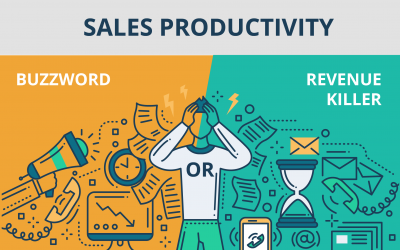
Many companies are feeling the pressure. If you don’t want to get left behind, there’s one number you need to focus on: 22.
Imagine the effect on your bottom line if you could boost that percentage.
Say your average sales rep brought in R10 million last year. If you increased their percentage selling time from 22% to 26% the knock on effect would have been an extra R1.1m. That’s an 11% increase in sales.
But this isn’t just theory, many companies are doing just this.
Analyst, Forrester says that if you switch to an integrated sales solution your sales reps will each get back 53 minutes a day. Think of the effect this has on their selling time. 22% goes up to 33% – enough to significantly worry your competition!
While the numbers are clear, the question you need to ask yourself is: Can you afford not to do this?
Think of the impact if your competitors did this and you didn’t. What sales would you be leaving on the table?
“We saw our sales teams spending upwards of 40% of their work week doing admin tasks. That number is now approaching 10% because we can do things in an integrated fashion, from wherever and whenever there’s an opportunity.”
19% increase in productivity
Sales professionals gained 19% in productivity by being able to access client data anywhere and anytime.
The page you requested could not be found. Try refining your search, or use the navigation above to locate the post.
Discover More Stories

It doesn’t take an economist to see that we’re in a tough spot. The shops are empty. People – and businesses – are under huge pressure.
Will things get better? While they say that time heals all, the fact is that market downturns mean deep economic recalibration – there will be winners and losers at the end of this. It’s scary, but it’s true.
The better news? It’s possible to emerge even stronger on the other side.
So strap in, hold on and commit.

It may seem counterintuitive, but when times are tough, resist the urge to do more. Instead, get back to basics – focus on your business’s core. Do fewer things, but do them right! Boom times allow for the growth of fluff, while recessions reveal the real revenue drivers. Exploit this opportunity to identify them.
Tough times reveal the products and services that are your business’s bedrock – direct your energy there.

New customers? Be crystal clear on your targets for new acquisitions – come one, come all isn’t a strategy to deploy when the market is making life difficult.

By driving efficiencies in this part of your business, you’ll free yourself up to add value elsewhere.

Automation can give people the time they need to focus on sales. When back-office processes are taken care of, there’s no need to sit in the office crunching through admin. You can work from anywhere, knowing those aspects of business are taken care of.

Smart software that integrates machine learning techniques can help streamline the process and power intelligent decisions.
Need a report? You should be able to grab one instantly.

The second? Stop customers from straying. You can do this, for example, by introducing a sub-brand, which customers can cancel their use of later.

Secondly, get social. Go where your customers are and get your customer mix right. Closeness with the right customers has never been more important than right now.

With your admin and reporting under control, this becomes far easier. You have both the time and the necessary tools to make revenue generation a top priority.
What we can change is how we react.
The page you requested could not be found. Try refining your search, or use the navigation above to locate the post.
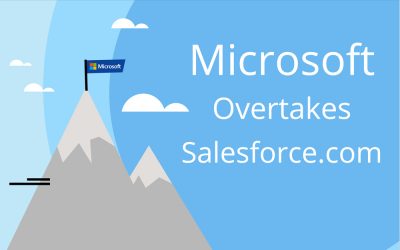
“Microsoft delivers on intelligent seller productivity.” – Forrester 2017 Q2 report
The Satya Nadella Treatment
You might ask yourself what has given Microsoft the edge? While they have invested heavily in machine learning/artificial intelligence, and the now famous acquisition of LinkedIn, Forrester put it down to a “heightened focus on seller productivity”.
Sales software has traditionally focused on reporting and analytics. But with deep integration into Outlook, Microsoft has made it possible for sales reps to more productive on the go. Simple things such as not switching between apps has recently been shown to have a massive impact on revenue.
Forrester concludes:
“Microsoft is a best fit for companies looking to capitalize on the productivity gains of their other Microsoft cloud investments” – which is fairly obvious. But interestingly, they go on to say:
“..and those companies that are …looking to disrupt their peers with AI and machine learning”
Sales teams across the globe are already disrupting their competitors with Microsoft’s new Dynamics 365 platform, but ironically, this disruptive ability is already being felt by Microsoft’s own competitors.
If you want to find out more, why not check out: Office 365 & Dynamics 365
[1] John Bruno, The Forrester Wave: Sales Force Automation Solutions, Q2 2017 (Forrester)
The page you requested could not be found. Try refining your search, or use the navigation above to locate the post.
Discover More Stories

Sounds like strange advice in the current market, doesn’t it? It shouldn’t. When times get tough, many make the mistake of losing confidence. They focus inwardly, looking to consolidate what they have, rather than outwardly: on what could be. This is unnecessary self-sabotage!
Rather: vision, guts and a little ingenuity can make all the difference, separating the winners from the losers.
A major opportunity every business should be exploiting is this: Creating extended sales teams. By viewing everyone in your business – yes, everyone – as a salesperson, you immediately increase your sales potential.
Selling is no longer about the gift of the gab – it’s about building trust. And that means that everyone in your business can – and should – sell.
In fact, those people who already work for you are actually in the best position to do so. For example, who better to up-sell a deal than a service technician who is always on the front-line delivering to customers?
It’s true – not everyone understands the world of sales. So, sales managers may need to step in to provide guidance at first – showing those new to the process how to identify opportunities. Putting incentive structures in place is key too, as it will change the behaviour people have in seeking out new sales avenues.
The first step? Focus on your service people. Service teams interact with clients every day, throughout every stage of the post-sales cycle. That interaction equates to trust – trust that’s been built up over time. Here are a few ideas on how to leverage their abilities:
Create referrals – Referral leads convert at a higher rate than typical leads. Not only that, but referred customers tend to spend more. If you’re not exploring this avenue with your service people, you may be losing out.
Ask for customer feedback – Develop a culture of gathering (and sharing!) feedback. Use that information to learn and grow. Ask your marketing team to develop a set of key questions, then get your service people involved deployment. Use the feedback gathered to help improve both your product development and sales processes. Your service people are on the ground – they can access insights others simply can’t. Change what needs to be changed on the basis of what you discover and, if need be, rethink your approach. Also, share the changes you made with customers who gave you the feedback in the first place. They will feel appreciated and are more likely to give you more feedback in the future.
Cross-sell, up-sell and even down-sell – Have a client with a basic plan or product? Get your service teams to ask well thought through, quality questions; they understand customer needs and pain points better than anyone else. This means they’re best positioned to make recommendations about how customers can access better services. Don’t discount down-selling either: if a client is wavering, a basic plan can be a way of retaining their business, with the potential for growth in future.
Capitalise on online chat – The market has changed. Digitisation, fluidity and instant communication are the order of the day. Customers have come to expect fast responses and real-time interactions. The right person providing the right information online can both improve customer experience and shorten the sales cycle.
There was a time when marketing teams simply handed over leads to sales. Those days are gone. Now, marketing is operating ever further into the entire sales cycle, taking customers ever deeper into the journey.
This means that your marketing teams are increasingly important to the sales process. It also means that they need to be more knowledgeable about sales (and how your business runs) than ever. Here are a few tips:
Here’s the key: customers are not only the people you sell to. They’re also the people who can help you sell.
Customers can be a great source of new sales leads. Leverage your customers’ networks to explore new opportunities and open new doors. If you’ve worked well with a customer and developed rapport, you’re well positioned to ask for references into other business units or departments in their company.
Existing customers can also be extremely effective last-inning closers too. If there’s a deal in the pipeline or a lead who’s on the verge of buying – but who is not yet quite convinced – ask an existing customer to help close the deal. ‘My experience with the company was great’ is often just that little bit more effective as a sales tool than ‘Your experience with our company will be great’.
Sales is no longer about smooth talking – it’s about building trust and long-lasting, mutually beneficial relationships with customers. With a little guidance and the right incentive structures in place, you can empower anyone in your business to build and grow the kind of connections every successful business needs.
The page you requested could not be found. Try refining your search, or use the navigation above to locate the post.
Discover More Stories
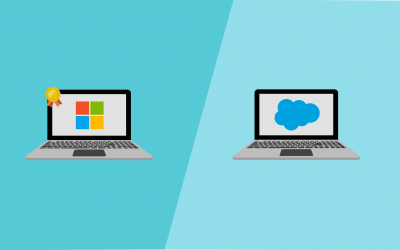
In our post, Microsoft Overtakes Salesforce.com, we shared an important market shift: Global analyst Forrester placed Microsoft ahead of Salesforce.com for the first time.
This is hugely significant. To understand this trend, we asked our customers why they chose Dynamics 365 over Salesforce.
Here were their top 6 reasons:
Most companies already use Microsoft’s products: Word, PowerPoint, Excel, Outlook etc. So, it’s no surprise that Microsoft is the leader in integrating those technologies with Dynamics 365.
Our customers love the fact they can work in Dynamics 365 without leaving Outlook. With Office 365 and Dynamics 365 built on the same common data model and hosted together on Azure, your data couldn’t be more integrated. And with Microsoft’s purchase of LinkedIn, LinkedIn’s powerful Sales Navigator syncs directly with Dynamics 365.
While Salesforce also offers integration with Outlook, Exchange, LinkedIn etc. our customers said that the integration was more difficult and limiting in terms of functionality.
Our customers are being asked if they are seeing value in their technology investments – if it’s having an impact on their bottom line.
This is something Microsoft is very strong in. Feature-by-feature, analysts consistently find little to choose between Dynamics 365 and Salesforce. But when it comes to the price of those features, there is no comparison. Microsoft is consistently lower in cost. And lower cost means a quicker time to proving value.
For instance, if you compare the core enterprise offerings, Microsoft Dynamics 365 Customer Engagement Plan costs $115/user/month. In contrast, Salesforce’s Lightning Enterprise Edition costs an extra $35 per user per month at $150/user/month. However, with the Customer Engagement Plan, you get Customer Service, Field Service, Project Service Automation, Powers Apps and Microsoft Flow – all included. In contrast, Salesforce only includes the sales elements.
Microsoft’s offering not only costs less, but it’s a complete, robust, multifunctional CRM. It’s much easier to get business value with a platform where you get more for less.
Your business isn’t static, so neither should your technology. The ability to customize and develop your platform should be a key consideration when choosing between Dynamics and Salesforce.
Unlike Salesforce, Dynamics 365 is only built on widely used programming languages (.Net, C# etc.) . This means it is easier to adjust your platform – because you have a broader pool of developers to draw on: either in house, or through Microsoft’s extensive partner network. And it also reduces the next issue…
Automation, Artificial Intelligence, Machine Learning. There’s a huge technological wave coming. Companies will either surf on top of this wave or be crushed underneath. Google, Facebook, Apple, Amazon, Microsoft – all the big hitters are investing heavily in this. Salesforce realized this recently and went on a spree of purchases of AI start-ups. But in terms of spend, they can’t compete.
For instance, Microsoft’s annual R&D budget is $12Bn (at least $4Bn of this is AI). In contrast, Salesforce’s turnover is just $10Bn. Microsoft is pumping the benefits of this research into Dynamics 365 at a tremendous rate and have made it a key focus in future development.
In Conclusion
Dynamics 365 is at the forefront of helping businesses like yours become more efficient and improve your bottom line. It will cost you less than Salesforce and you’ll get more for your investment.
Why not join our customers and discover what Dynamics 365 could do for your business?
The page you requested could not be found. Try refining your search, or use the navigation above to locate the post.
Discover More Stories

The mantra’s stuck around for a reason, but the route to the promised land has changed.
Now, surprise and delight means not only delivering great customer experiences, but leveraging the power of tech in doing so – a fact that holds true for field service organisations in particular.
The reality is that in today’s hyper-competitive, tech-saturated marketplace, customers have come expect more than ever before from Field Service Organisations (FSOs):
At the same time, strategies that place too much value on new customer acquisitions through a short-term tech focus tend to be unsustainable.
So, how can FSOs navigate this new business landscape and use tech to power long-term sustainable goals? Here are five rules to bear in mind:
The next client … the next big sale … focusing too hard on these can come at the cost of your current customer base.
Remember: your existing customer base is your most profitable base. Also: it’s expensive to acquire new customers. Your current customers’ experience with your organisation should therefore be a high priority. So, improve the customer journey, making sure it’s studded with positive interactions and value-adds – repeat business and referrals await.
Consider this: a customer calls in, needing to have a piece of equipment repaired. The repairs are done, and the customer walks away happy. However, since the customer isn’t a specialist, what he’ll remember most about the process is the customer service he received. Sometimes it’s just as much about how you make a customer feel as the actual service you provide.
However, the reality is: your competitors get it. They know the value of tech. And chances are, they’re investing in it a big way.
The result? When enough businesses begin to transform, everything in the marketplace changes. The benchmarks customers expect service providers to meet go way up. The ways in which clients expect to interact with businesses (including yours) are completely remade.
Consider:
The right data analysis can reveal everything from up-sell and cross-sell opportunities, to ways in which to maximise your most profitable customer relationships, refine service delivery based on past feedback and identify your most profitable customer groups and product types. Gone is guesswork. In its place – data-guided decision making.
More importantly – data is the core of personalisation. And personalisation has come to define the most critical interactions in business today. Customers expect you to understand their needs and provide tailored, individualised service. To do that – and do it well, without draining your resources – you need the right tools to dig into your data.
For example, by knowing what products or services a customer ordered from you in the past allows you to streamline how you interact. It also allows you to suggest relevant options, upgrades and associated services.
Schedule optimisation is one internal process that can drastically improve profit. For example: by using Microsoft Dynamics 365, technicians can dramatically increase the number of appointments they’re able to fit in each day, improving both productivity and profitability.
As your business grows, increasing efficiency becomes paramount. Failing to put the systems in place to allow you to grow – without adding to headcount – can mean the difference between linear and exponential profit growth.
Field techs are the face of a business. So, make sure you empower them to consult with and add value to each client interaction.
This can mean anything from adding a touch of personalisation to every meeting, going the extra mile when it comes to fulfilling an order, or using tech to streamline order processing, parts ordering and payment. Doing so can be a powerful differentiator in the market.
The page you requested could not be found. Try refining your search, or use the navigation above to locate the post.
Discover More Stories
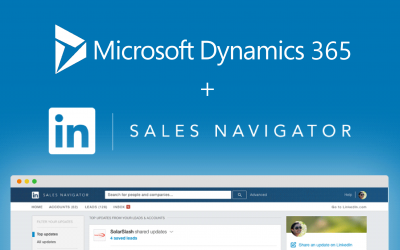
Get an hour back each day. That was the conclusion of global tech analyst, Nucleus Research when they looked at LinkedIn’s Sales Navigator with Dynamics 365 for Sales. Putting it another way, using this combination gives you a 12-15% increase in your productivity. Think how many more deals you could close because of this.
This is a big claim. But it’s not unreasonable. We’ve been using LinkedIn Sales Navigator with Dynamics 365 for months, and have been experiencing the benefits.
Now, when a lead comes to us we get all the data from LinkedIn alongside it. From this one lead, we can easily identify all the stakeholders associated with the deal – without leaving Dynamics 365. We can see their photos, job title, past work history, connections, etc. It’s incredible.
But don’t just take our word for it, you can read the report here. Or better still, see it in action in this short video:
Nucleus Research concludes:
“Clearly Microsoft has an advantage with the sheer volume and granularity of business relationship data within LinkedIn.”
What’s stopping you from having that advantage too?
Talk to us today.
The page you requested could not be found. Try refining your search, or use the navigation above to locate the post.
Discover More Stories